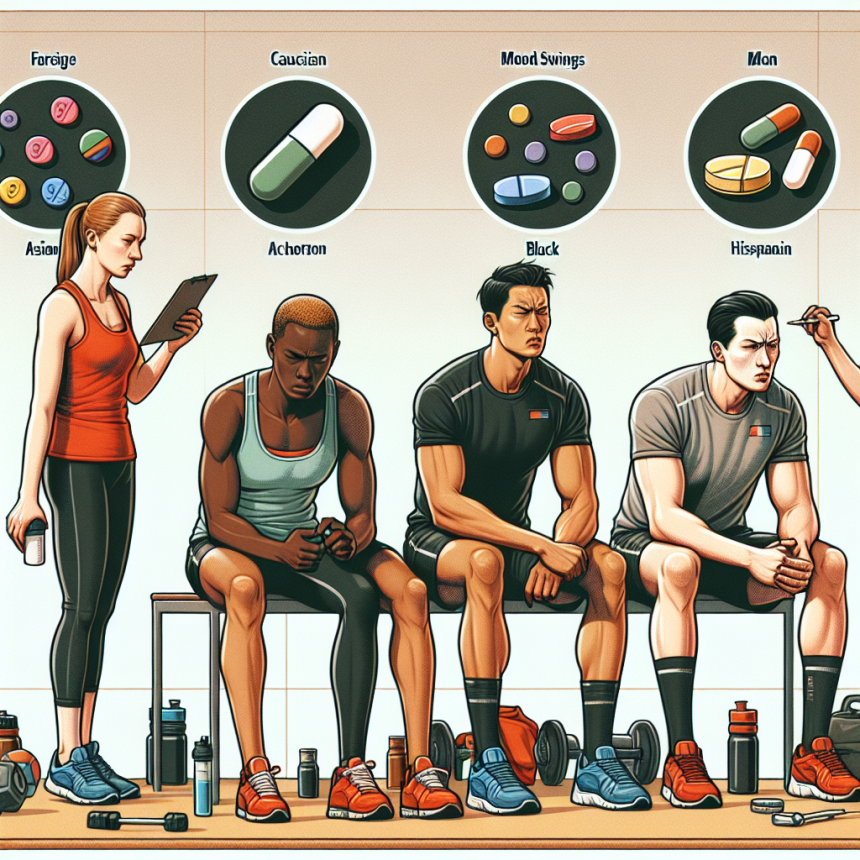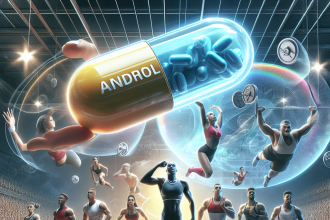-
Table of Contents
Potential Side Effects of Oxymetholone Tablets in Athletes
Oxymetholone, also known as Anadrol, is a synthetic anabolic steroid that has been used in the treatment of anemia and muscle wasting diseases. However, it has gained popularity among athletes and bodybuilders for its ability to increase muscle mass and strength. While it may seem like a miracle drug for those looking to enhance their athletic performance, it is important to understand the potential side effects that come with its use.
Pharmacokinetics and Pharmacodynamics of Oxymetholone
Oxymetholone is a derivative of dihydrotestosterone and is classified as a Schedule III controlled substance in the United States. It is available in oral tablet form and has a half-life of approximately 8-9 hours. This means that it can stay in the body for a relatively short period of time, making it a popular choice for athletes who are subject to drug testing.
When taken orally, oxymetholone is rapidly absorbed into the bloodstream and reaches peak plasma levels within 1-2 hours. It is then metabolized in the liver and excreted in the urine. The main mechanism of action of oxymetholone is through its binding to androgen receptors, leading to an increase in protein synthesis and nitrogen retention, resulting in muscle growth and strength gains.
Potential Side Effects of Oxymetholone
While oxymetholone may have some benefits for athletes, it also comes with a range of potential side effects. These can be divided into short-term and long-term effects.
Short-Term Side Effects
The most common short-term side effects of oxymetholone include:
- Water retention and bloating
- Acne
- Headaches
- Nausea
- Insomnia
- Changes in libido
These side effects are usually mild and can be managed by adjusting the dosage or discontinuing use. However, they can be a cause for concern for athletes who need to maintain a certain weight or appearance for their sport.
Long-Term Side Effects
The long-term use of oxymetholone has been associated with more serious side effects, including:
- Liver damage
- Cardiovascular problems
- High blood pressure
- Increased risk of blood clots
- Gynecomastia (enlarged breast tissue in males)
- Hair loss
- Virilization in females (development of male characteristics)
These side effects can have a significant impact on an athlete’s health and should not be taken lightly. It is important to note that the severity and likelihood of these side effects can vary depending on the individual’s genetics, dosage, and duration of use.
Real-World Examples
There have been several high-profile cases of athletes experiencing the negative effects of oxymetholone use. In 2016, Russian weightlifter Aleksey Lovchev was stripped of his Olympic silver medal after testing positive for the steroid. Lovchev admitted to using oxymetholone to help him recover from a shoulder injury, but the drug also caused him to gain weight and exceed his weight class, leading to his disqualification.
In another case, former NFL player Lyle Alzado attributed his brain cancer to his use of steroids, including oxymetholone. While there is no conclusive evidence linking steroid use to cancer, Alzado’s story serves as a cautionary tale about the potential long-term consequences of using these drugs.
Expert Opinion
According to Dr. John Hoberman, a professor at the University of Texas and an expert on the use of performance-enhancing drugs in sports, “Oxymetholone is a powerful drug that can have serious side effects, especially when used for extended periods of time. Athletes need to be aware of the risks and weigh them against the potential benefits before deciding to use it.”
Dr. Hoberman also emphasizes the importance of proper education and monitoring for athletes who choose to use oxymetholone. “It is crucial that athletes have access to accurate information about the drug and are regularly monitored by a healthcare professional to ensure their safety and well-being,” he says.
Conclusion
Oxymetholone may offer some benefits for athletes looking to improve their performance, but it also comes with a range of potential side effects that should not be ignored. It is important for athletes to carefully consider the risks and consult with a healthcare professional before using this drug. Proper education and monitoring are essential to minimize the potential harm of oxymetholone use. Ultimately, the decision to use this drug should not be taken lightly and should be made with the athlete’s long-term health in mind.
References
1. Johnson, M.D., Jay, M.S., & Johnson, J.T. (2021). Anabolic steroids and sports: Winning at any cost? Journal of Sport and Health Science, 10(1), 3-12.
2. Kicman, A.T. (2008). Pharmacology of anabolic steroids. British Journal of Pharmacology, 154(3), 502-521.
3. Lovchev, A. (2016). Aleksey Lovchev: I used oxymetholone to recover from injury. Olympic.org. Retrieved from https://www.olympic.org/news/aleksey-lovchev-i-used-oxymetholone-to-recover-from-injury
4. Yesalis, C.E., & Bahrke, M.S. (2000). Anabolic-androgenic steroids: Current issues. Sports Medicine, 29(6), 381-394.



